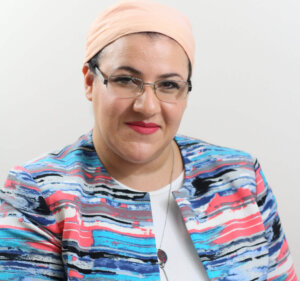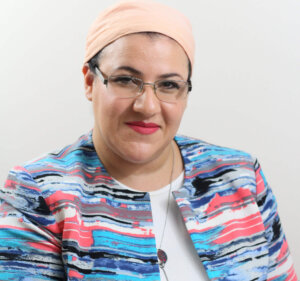Uncategorized
From a Kanye West parody to AI versions, here are 10 new haggadahs to try this Passover
(JTA) — What makes this year’s batch of new haggadahs different from all other years’? For one thing, there are entries written by machines — with not just one but two different versions written by artificial intelligence.
The haggadah market is continually booming, as Jewish writers and creatives take inspiration from news, pop culture and other trends to create seder texts and supplements that break out of the Maxwell House box. This year’s crop tackles Kanye West, the AI app craze, turmoil in Israel and more.
Here are 10 haggadahs to freshen up your seder this year or in the future. (For more options, check out last year’s list, including an Israeli Black Panthers haggadah now in its second printing and another written in Shakespearean verse.)
For the Kanye hater
Serial haggadah humorist Dave Cowen is back with his latest pop culture-themed Passover text: “The Meshugah Kanye Haggadah: A Passover Parody Musical,” which takes songs by the rapper Kanye West, now known as Ye, and loosely changes the lyrics to tell the holiday story. For those who missed the news in the fall, West declared himself an antisemite through a series of interviews and social media rants — though he recently recanted. West has said he struggles with bipolar disorder, and Cowen is donating part of the profits of his haggadah to Mad in America, which publishes research and content aimed at rethinking mental health care in the United States.
For the psychedelics-curious
Interested in “tripping toward freedom”? Or “ingesting transformation” through karpas? How about reciting kadesh with “spiritual intention”? Then you might be drawn to “Taste & See: A Psychedelic Pesach Companion” from the Jewish artist-run Ayin Press. It pairs prayers with specific psychoactive substances and then offers Jewishly-inspired passages to guide one through a seder trip, in a foundational text for the growing Jewish psychedelics movement.
For the visual artist
An Israeli artist collective known as Asufa has put out a haggadah featuring colorful and sometimes edgy illustrations by a slew of up-and-coming artists, for the last decade. Only once before has the collective put out a version with English text — until now. A 10th anniversary edition culls artworks from previous editions in one place with a gold-foil cover and a bilingual text. The group put out a new Hebrew version with fresh art as well.
For those concerned about Israel
As the founder of the first Orthodox yeshiva that ordains women clergy, Avi Weiss is no stranger to commenting on fractures in the Jewish community. The liberal Orthodox rabbi and outspoken pro-Israel activist is doing so again in haggadah-supplement form this year, writing in prayers and points of discussion for a seder on the political crisis in Israel that has exploded since the country’s right-wing government took office earlier this year. “It is a template meant to inspire thoughts wherein seder participants can join in, sharing their own reflections and interpretations,” he writes.
For the visually impaired
The Jewish Braille Institute has teamed up with the Kehot Publication Society, the publishing arm of the Chabad-Lubavitch movement, to revamp and re-promote its free haggadah for the visually impaired. “Whether these haggadahs help a grandfather hoping to lead a seder as they have for decades or a child who hopes to read the four questions for the first time, JBI’s mission is to make sure that every person who chooses to can participate in our beloved traditions and know that they belong at the table,” JBI’s president, Livia Thompson, told Chabad.org.
For fans of Chat GPT
The Chat GPT bot can do everything from compose music to hold conversations. It was only a matter of time before someone instructed it to produce a haggadah. Israelis Royi Shamir, an architect, and Yitzchak Woolf, a photographer, produced a version of the seder text through the app — a co-author they’ve called Rabb.AI. The original art in “Haggad.AI” — billed as the first of its kind — were produced by Midjourney, another artificial intelligence program that creates images from prompts. Julie Shain, an editor of the popular Daily Skimm newsletter, has done the same with “The AI Haggadah“; both start with text from Sefaria, the free online Jewish resource. (Both haggadahs are invigorating debates about the necessity of humans in Jewish practice.)
For the impatient
One of the best-selling haggadahs on Amazon this year has a pretty self-explanatory name: “The Swift Seder: The Concise Passover Haggadah for a Reverent Yet Efficient Seder in Under 30 Minutes.” No elaborate illustrations or long commentaries — just the instructions, story and explanations needed to run a tight seder (and a chapter full of songs to add in at one’s leisure).
For Ukrainian speakers
This year, for the first time ever, a haggadah is available in the Ukrainian language — a response to Ukraine’s war and the impulse of Jews there to shed their Russophone roots. This year the haggadah is available online only, but its creators — a Jewish feminist nonprofit and a musicologist who translated the whole text from its original languages — plan to make a print version available next year.
For trans Jews and their allies
The folks at Pink Peacock, the queer, Yiddish, anarchist cafe and Jewish movement in Glasgow, Scotland, have put out a “Trans Liberation Haggadah” perfectly timed for an era when trans rights are under attack in many states. The haggadah expands upon the haggadah supplement released a decade ago by Keshet, the LGBTQ Jewish advocacy group, in the brash spirit with which Pink Peacock has made itself felt far beyond its Scottish city.
Honorable mention: For curious kids (and their grownups)
Our sister site Kveller’s haggadah isn’t new — it was first published in March 2020 — but it still deserves a spot on any haggadah list, especially for families with young children. It makes the seder more digestible for kids, and it also features insights from renowned researchers who explain the connections between memory and food.
—
The post From a Kanye West parody to AI versions, here are 10 new haggadahs to try this Passover appeared first on Jewish Telegraphic Agency.
Uncategorized
2025’s Jewish highlights — from ‘Marty Supreme’ to Max Fried’s menschy move

Jews have been in the spotlight in the past years for all kinds of reasons, many of them less-than-fun: Gaza, war, hostages, protests. But looking back, we wanted to boil it down into highlights. Or at least things that were just really, really Jewish. Basically, everything we thought was worth making note of in the last year, whether for its merits, its lack thereof, or just for its pure oddity.
You may notice reading that there seem to be a few doubles in these categories. But, you see, the “best Jewish movie” is not necessarily the “most Jewish movie.” That’s because there has been a glut of loudly Jewish content that’s awfully hard to ignore, screaming for our attention. That doesn’t mean it’s good, but it’s notable.
So read on for the Jewish things you should remember — whether you want to or not — from 2025.
Best Jewish movie
It’s apparently a Safdie family tradition to induce anxiety in movie-going Jews on Christmas. (Uncut Gems arrived Dec. 25, 2019.) Josh Safdie’s film, about salesman-hustler-table-tennis dynamo Marty Mauser, accumulates Yiddishkeit as it goes, including a brief cameo by a Forward delivery truck. Timothée Chalamet dons thick-rim glasses and hangs a Magen David over his chest as he jousts with a Holocaust survivor opponent (there were a few ping-pong champs who did, in fact, survive Auschwitz). A character in the tradition of Sammy Glick and Duddy Kravitz, Marty is as magnetic as he is entitled. While the film’s concerns are universal, it is perhaps primarily a portrait of the New Jew, not of the Nordau school, but the American one, who regarded success as something he’s owed.
Most Jewish movie
These days, there is such a glut of Holocaust content that each new book, movie or show has to find a unique niche. Nuremberg did so by focusing on the relationship between Hermann Goering, Hitler’s right-hand man, and the psychiatrist assigned to analyze him before the eponymous trials, a man who hoped to find some genetic or mental component for evil that he can diagnose.

But the movie is so intent on being informative that it neglects to actually develop its characters and give real insight into Goering’s mind and motivations, or anyone else’s. Though it purports to be a movie about the banality of evil, it was actually just banal. It culminates in the shocking realization that evil has no genetic component, and most of its reveals carry just as little weight. Its most impactful moment is actually a piece of another film: the archival footage shown during the actual trial, which the movie excerpts.
Most Jewish movie that isn’t actually Jewish
Sentimental Value
In Joachim Trier’s film, which won the Grand Prix prize at Cannes, aging filmmaker Gustav Borg pursues reconciliation with his daughters by trying to cast them in his next film, which is a dramatization of his life. He wants the younger sister Nora, a theater actress who battles crippling anxiety, to play his mother who died by suicide; he’s cast the preteen son of Agnes, the elder sister, as a younger version of himself.
The Norwegian family depicted in this film isn’t Jewish. But Trier introduces all the classic beats of Jewish cultural concern: inherited trauma, the artist’s struggle, and the allure/disappointment of goyish blondes (this one played distractingly by Elle Fanning).
(Bonus points for Jewish musical-comedy darling Catherine Cohen’s bit part as Fanning’s phone-addicted manager.)
Most Jewish TV
The second season of Netflix’s Hot Rabbi hit rom-com, once again dominated Jewish conversations — and the streamer’s most-watched list. But much like its huge first season, the second left something to be desired in terms of its representation of Jews, who once again seemed to be incredibly limited by their religious identity and beliefs, and yet simultaneously eager to cast them off given the right opportunity. Stereotypes — like Jews being bad at sports or good at complaining — do a lot of the work of making the show Jewish. The effect is that Nobody Wants This doesn’t feel Jewish so much as it screams at the audience “this is a Jewish show!”
The show’s approach to Jewishness is perhaps best captured by the fact that menorahs, inexplicably, constantly appear in the background, even though it’s not Hanukkah at any point in either season. But without a hanukkiah on display — and, sometimes, lit — how would we know it’s Jewish?
Best Jewish TV
Long Story Short
The animated show from the creator of the surrealist show Bojack Horseman, Raphael Bob-Waksberg, managed to avoid the pitfalls that so often plague very Jewish media — namely heavy-handedness around Israel, or antisemitism, or leaning on clumsy exposition to define Jewish practices for a gentile audience. Instead, the show just lets its Jewish family be, while also showcasing a wide range of Jewish diversity; the family includes a Black Jewish convert, both a ba’al teshuva son and another son who struggles to connect with his Jewishness, and a queer couple. Each character feels deeply familiar to anyone who spends time in Jewish community, but the show doesn’t try to make the jokes easy to read to non-Jews. Maybe that means some of them fly over the heads of anyone not in the tribe, but that means it’s pitch-perfect for those of us looking for a deeper, subtler representation of Jewish life.

Most Jewish play
The latest play from writer and actress Liba Vaynberg, imagines how six of the Biblical matriarchs — Miriam, Sara, Rebecca, Rachel, Leah and Tziporrah — would have lived today. Set over the course of decades, the girls start the play as 13-year olds and end it in the late stages of adulthood. Each girl’s path is a smart imitation of their matriarch’s actual story, transposed into the modern day. Sara struggles with infertility. Miriam becomes a rabbi, believing that studying Torah will help her lead a good life and avoid misfortune. Leah’s mandrake root is substituted by weed edibles. With humor and an impressive amount of Jewish references that only those steeped in biblical expertise might catch, the play asks: Why is life full of sacrifices, especially ones that seem unjustified? Vaynberg is not interested in giving a solid answer, but still provides a satisfying ending, assuring that life, no matter what it brings, is meant to be lived in full.
Best Jewish play
Slam Frank
Ragebait maestro Andrew Fox’s opus, which reimagines Anne Frank as Anna Franco, a pansexual Latinx immigrant from the “barrios of Frankfurt,” is a piece with many moving parts: a social media campaign that shames the Auschwitz-Birkenau Museum for not including chanclas in their mountains of shoes and, yes, also a “real musical,” despite the doubts of many online who assumed it was pure trolling. In fact, it’s a lucid commentary on the state of woke, where identity boxes serve as proxies for character development, and stops just short of being a full referendum on inclusion.
The piece, riffing on nearly every virtue-signalled mega-musical of the last two decades, is at its most knotty when it takes on Jewishness; Fox knows being Jewish doesn’t map neatly to the fashionable formulas of white privilege and oppressor-oppressed. In the end, it is the reimagined attic residents’ existence as Jews that unravels the simple binaries of progressive politics.

Most Jewish book
Sam Sussman’s novel takes the author’s own nebulous biography as its subject — and the suspicion that Bob Dylan may be his father. If this wasn’t Jewish enough, the initial meeting of his mother and the future-Nobel Laureate took place in the studio of painter Norman Raeben, whose father was Solomon Naumovich Rabinovich (aka Sholem Aleichem). The book generated a lot of interest as a work of a promising debut from a young novelist.
Another extremely Jewish book
Kaplan’s Plot
A rollicking story that toggles between a Ukrainian mobster scraping by and a modern-day tech worker digging through family history, essayist and memoirist Jason Diamond’s first novel digs into Jewish Chicago. Really, as any good Jewish story spanning generations, the book is an examination of the impact of inherited trauma, but it’s not too heavy; it crackles with fast-paced Yiddishisms and the propulsive plot of a thriller. Jewishness isn’t the book’s subject as much as it is its entire ethos.
Funniest Jewish newsletter
One of the brightest and least-talked-about trends in the Jewish world right now is the second wave of Substack newsletters introducing new perspectives on Jewish life. (Read about the first wave here.) Bagel Emoji, a semiregular dispatch from a semi-anonymous, gay semi-Orthodox Jew who lives in Los Angeles, delivers feverish, meandering riffs on niche trends like AI content in Jewish print publications and the notorious odor of a particular kosher grocer to say something deeper about frum life. Bagel’s general sass — thinly masking affection, I think — makes each entry essential reading.
Spiciest Jewish newsletter
Picture a newsletter about Israel discourse so hot it must be handled with gloves. That’s NonZionism, a regular rant from an Israel-based writer who goes by the pen-name Mascil Bina. Skewering the excesses and hollowness of both pro-Israel and anti-Israel ideology, the author’s perspective offers a third position: That Israel is “something that wasn’t inevitable, but cannot now be undone.” His takes are unsparing, and unexpected — one week, it’s the case for Bibi Netanyahu; the next, it’s a withering critique of hasbara titled “Zionism turns your brain to mush.” Just recommending it feels risky.
Best Jewish music moment
Streisand and Dylan duet
Streisand announced an album of duets, The Secret Of Life: Partners, Volume Two, with the likes of Hozier, Paul McCartney, Mariah Carey, Ariana Grande and — finally — Bob Dylan, resolving decades of a great musical will-they-won’t-they.
“The track opens with the sound of harmonica, a sound often associated with Dylan,” wrote the Forward’s Seth Rogovoy. “But this harmonica sounds nothing like Dylan’s style, and it is definitely not Dylan playing.” He is singing though, and Barb comes in by the fourth line. Unfortunately, they have yet to duet on “Lay Lady Lay,” a song Dylan purportedly wrote with Barb in mind.
Best “Good for the Jews” moment
Britney Spears admiring the beards of Chabadniks playing chess
The Instagram post was rizz recognizing rizz.
Best Jewish Food Moment
Manischewitz launches food truck

Since 1888, the Manischewitz Company has been a Jewish household staple. But now, it’s taking its signature products on the road. The Manischewitz Deli on Wheels, an orange truck that serves rugelach, hot dogs, vegetarian egg rolls, and matzo ball soup, launched this March as part of the brand’s plan to market to younger audiences. Last year, the company launched a frozen food line that emphasized convenience, a quality they are also trying to capture in their truck. Manischewitz has a city-wide license and plans to take the truck all over New York and New Jersey. Its creative branding and warm servings of classic Jewish comfort food are a welcome addition to the already bustling food-truck scene.
Most Jewish Food Moment
New York City sets a new record for the world’s biggest Shabbat dinner
On Nov. 20, more than 2,500 Jews — 2,761 to be exact — sat down at the Javits Convention Center in Manhattan and broke the record for the world’s biggest Shabbat dinner. The previous record had been set by Berlin in 2015 with a dinner of 2,322 people. The Forward’s Hannah Feuer was in attendance to get all the details — and do her best to eat all the food served over the multi-course meal. The event included 811 pounds of kugel, 402 challahs, and 22,500 hors d’oeuvres and, in an AI generated video, Albert Einstein, Ruth Bader Ginsburg, Golda Meir and the Hebrew patriarch Abraham offered commentary on the dinner. For entertainment, a woman in a leotard, suspended by wires from the ceiling, played “If I Were a Rich Man” on the violin and the Jewish a capella group Six13 sang “We Are the Champions” to celebrate the victorious occasion.
Biggest Jewish sports disaster
A bicycle blowup
Canadian-Israeli billionaire Sylvan Adams had a hobby — competitive cycling — and a dream: using the sport to bolster Israel’s image abroad. That dream crashed hard into reality this summer at the Spanish Vuelta, where Adams’ team — called Israel-Premier Tech, and featuring zero Israeli or Jewish riders — turned out thousands of anti-Israel protesters.
Several of the race’s stages were altered or cancelled, including the final, which was halted several miles short of the finish line. By the Vuelta’s conclusion, some of the other riders were openly campaigning for Israel-Premier Tech’s exclusion and the team had removed “Israel” from its jerseys. The team’s demise became official this month when it was announced that retired Spanish footballer Andres Iniesta had bought IPT and, er, rechristened it.
Best Jewish sports performance
Avdija delivers
Deni Avdija was not supposed to be this good. Yet in his sixth season, the Portland Trail Blazers’ forward has been producing like an All-Star — he’s averaging 26 points, 7 rebounds, 6 assists per game as of this writing, with borderline elite efficiency — and with any justice, he’ll soon become one.
Most heartwarming Jewish sports moment
A very Jewish draft
It’s gotta be the back-to-back selections of Jewish Brooklyn Nets rookies Ben Saraf and Danny Wolf at June’s NBA Draft. Some draft prognosticators were expecting Wolf, a dynamic seven-footer who led Michigan to the Sweet 16, to be picked early in the first round — before Saraf, a spindly Israeli point guard. Instead, when Nets took Saraf with the 26th pick, the Wolf ganze mishpoche was still twiddling their thumbs. Moments later, though, Commissioner Adam Silver called Wolf’s name, sending older brother Jake Wolf into full-blown sobs — and into the unofficial sports meme hall of fame.
Menschiest Jewish athlete
Max Fried
The Yankees ace called reigning Cy Young winner Tarik Skubal to tell him he deserved to start the All-Star game in his stead. “It’s a very professional thing to do, and you got a ton of respect for guys that do stuff like that,” Skubal later told reporters. What we were thinking: This kid must have great parents!
The post 2025’s Jewish highlights — from ‘Marty Supreme’ to Max Fried’s menschy move appeared first on The Forward.
Uncategorized
An Israeli media mainstay is crumbling. Will liberal democracy go with it?
The Israeli government has taken another alarming step in its efforts to crack down on the press by moving toward shutting down Army Radio, which reaches some 900,000 listeners a day.
A unanimous Monday cabinet vote to close the station is being sold as a matter of logic, efficiency and principle. Why, after all, should a military institution operate what has long functioned as a national news outlet? Why should soldiers be involved in journalism? Why should the army run a radio station that frequently criticizes the government and the defense establishment itself?
On the surface, those questions sound persuasive. In most democracies, such a setup would indeed raise eyebrows. Militaries are meant to fight wars; broadcasting current affairs, as Army Radio has since 1950, does not clearly serve that purpose. The independence of the press is a foundational democratic norm; there are good reasons to question whether a military-run outlet can uphold it. Strip away the Israeli context, and the case for closing Army Radio could sound like common sense.
But Israel is not an abstract political theory exercise. It is a specific country with a specific history, and Army Radio is a specific institution that plays a role no other outlet can fully replace. Its shuttering would be devastating. And the move to shut it down cannot be understood in isolation. It fits neatly into the broader campaign led by Prime Minister Benjamin Netanyahu to weaken, intimidate or take over every independent institution capable of producing criticism, accountability, or resistance.
Army Radio is not just another broadcaster. It is one of only two national radio stations in Israel that produces comprehensive news coverage.
The other is Reshet Bet of Kan, the public broadcaster that itself has been under constant attack by this government, facing unceasing efforts to strip its funding. Eliminate Army Radio, and Israel’s radio news landscape will be reduced to a single vulnerable station — precisely the outcome critics of the government’s media policy have warned about for years.
Historically, Army Radio has been a cornerstone of Israel’s free press ecosystem. It has trained generations of journalists who later shaped the country’s media culture — some while serving as soldiers, others as civilian staff who stayed on for decades. Its newsroom culture helped normalize the idea that journalism’s role is not to flatter power, but to scrutinize it.
That tradition emerged because the IDF, uniquely among militaries, is a “people’s army,” rooted in near-universal conscription and embedded in society rather than standing apart from it. Israelis have long understood that a station staffed in part by conscripts from across the country — religious and secular, right and left, center and periphery — is not a mouthpiece in the classic sense. On the contrary, Army Radio often earned its reputation by irritating ministers, generals, and prime ministers alike.
That approach earned it broad public trust — the same kind of trust that once established the IDF’s legitimacy. Incredibly, the government is also trying to undermine that trust through constant feuding with the military brass, and a concerted effort to deflect all blame for the Oct. 7 meltdown on the military. (Both government and military certainly failed on that day.)
The effort to close Army Radio mirrors the government’s campaigns against the judiciary and the police, among many other targets. Each time, the strategy is the same: identify a real or arguable flaw in an institution that exercises independence from total government control, exaggerate it, and then use it to justify dismantling or weakening that institution.
Netanyahu’s goal — similar to the successful project led by President Vladimir Putin in Russia, and to ongoing efforts in Hungary and Turkey — is to transform Israel into a country with something close to an elected dictatorship. His arguments are never openly authoritarian, but rather procedural, managerial, technocratic — and therefore harder to resist.
Communications Minister Shlomo Karhi’s broader project to restructure, weaken, and politicize Israel’s media landscape, framed as deregulation and modernization, consistently moves in one direction: reducing independent oversight, centralizing power and increasing political leverage over broadcasters. Where takeover is possible, pressure is applied. Where it is not, closure becomes the solution. Army Radio, inconveniently independent and symbolically beloved, cannot be easily captured, pressured through advertisers, or quietly restructured. So it must be eliminated.
Public opposition to the move has been broad and intense, cutting across ideological lines. For many Israelis, Army Radio is not merely a broadcaster; it is part of the country’s civic fabric. Closing it feels less like reform and more like provocation — another deliberate escalation in an ongoing culture war designed to pit Israelis against one another.
That, too, is a feature, not a bug.
This government thrives on confrontation with institutions that command public trust. By attacking them, it forces citizens to choose sides, reframes resistance as elitism or sabotage, and mobilizes its base through grievance and the seductive argument that a government elected by a majority is always legitimate in its actions.
Army Radio, anomalous as it is, stands in the way of Netanyahu’s Putinization dreams. Its existence contradicts the idea that media must either align with power or be marginalized. It reminds Israelis that criticism from within the system is not treason but patriotism. And that is precisely what makes it intolerable to an increasingly illiberal government.
None of this requires romanticizing Army Radio or denying that its structure is unusual. Yes, a military-run news station is an oddity. Yes, in another country, reform might be justified. But democracies are not built by eliminating every anomaly. They are sustained by preserving institutions that work, even when they defy neat theoretical categories.
Israel does not need fewer trusted voices right now. It does not need another symbolic demolition of a shared civic institution. And it certainly does not need to hand its already embattled media landscape another blow on behalf of a government that does Israel devastating harm.
The post An Israeli media mainstay is crumbling. Will liberal democracy go with it? appeared first on The Forward.
Uncategorized
How the next generation of rabbis is preparing for the age of A.I.

Denise Blumenfeld’s AI learning tool doesn’t have all the answers — or at least it’s not so eager to give them away. Instead, Blumenfeld, a second-year student at the Orthodox women’s seminary Yeshivat Maharat, has customized ChatGPT to answer her with questions with a question.

I watched recently as Blumenfeld fed a paragraph of Talmud into the module, aptly named Socrates Havruta (its surname is Hebrew for study partner). Its response tested her reading comprehension: Based on the first line of the text, what is the basic obligation around candlelighting? Blumenfeld typed in an answer, which Socrates affirmed before asking another.
She knew ChatGPT could simply summarize the text, but would that really help her learn it? On the other hand, responding to questions could help someone figure things out on their own. And to keep herself honest, she’d set a rule: “I always try to read the authentic source first,” she told me.
Blumenfeld is part of the first generation of rabbinical students who are training with artificial intelligence tools like OpenAI’s ChatGPT and Google Gemini at their disposal — and hoping to avoid those tools becoming a crutch. But the beit midrash, or study hall, is just one of many contact points they have with an invention that may be changing not only what it means to be a student or a rabbi, but also what it means to be Jewish.
To get a sense of how AI is helping shape the next generation of the rabbinate, I interviewed students from five U.S.-based rabbinical schools about how use and think about AI in relation to their work. Their attitudes ranged from guarded enthusiasm to flat rejection. But their comments — and the boundaries they had each set around their personal use — revealed the deep influence AI is already having on their professional and religious outlook.
This was true even for students who did not use generative AI at all. Adrian Marcos, a student at the Ziegler School of Rabbinical Studies, listed moral reasons he avoided it, among them its exploitation of stolen data, its environmental impact, and the digital literacy crisis it was accelerating. Yet Marcos admitted that the burden of explanation fell on AI’s detractors, not its enthusiasts.
“A lot of people are very into AI, and as a rabbi, whether or not you end up in a pulpit, you have to converse with those people,” said Marcos, a second-year student at the Conservative seminary. “And as the technology evolves, the conversations around it are also going to evolve.”
Hacking the sermon

ChatGPT can seemingly draw on the entire digitized Jewish canon, translate it from Hebrew if necessary, and draft new content about it. For students pursuing the rabbinate because of their passion for seeking and sharing knowledge themselves, the question was whether a tool that lightened the load was really helping.
Aiden Englander, a fourth-year at Yeshiva University’s Rabbi Isaac Elhanan Theological Seminary, engages ChatGPT for on-call intellectual companionship. Upon finding an interesting commentary on the week’s Torah portion, he’ll ask ChatGPT for secular variations on the idea. It might spit out Nietzsche, he said, or a recent news story.
Knowing ChatGPT can make such a connection unlocks a different level of rhetorical ambition — serving as a kind of academic force-multiplier — but it forecloses the possibility of, well, sorting out his concept without it. It also raises the question of what makes a sermon “better,” and whether literature you’ve only learned about via ChatGPT summary is any less suitable for a sermon than a volume you’re still working through on the page.
Englander’s calculus was straightforward. “When you’re able to quote a book that someone is familiar with, they’ll remember it more,” he said.

Though an avid user, he harbors doubts about AI’s reliability. “It will just completely make up a Gemara,” he said, and in his view its knowledge is especially shallow in matters of Jewish law. Yet what ChatGPT can do is what makes Englander, who is 24, most cautious. In a creative pinch, he’ll ask it to bullet-point some possible themes to explore from that week’s Torah portion to write a sermon about. But that’s a muscle he’s conscious about developing, so he tries to desist.
Yet a theological question about AI use persists underneath the utilitarian concerns. Is a ChatGPT-generated d’var torah a bad idea because it’s likely to spew cliches or degrade one’s writing ability — or because the very notion of a computer recommendation defeats the purpose of the exercise, which is to bring human experience to bear upon the Torah and vice versa? Major Jewish denominations have been as quiet on the religious questions around AI as rabbinical schools have been on the practical ones, leaving students to work out both problems on their own.
“An LLM doesn’t have autobiography — it’s not having a faith experience,” said Dani Pattiz, a second-year student at Hebrew Union College. “It can come up with these brilliant syntheses of other people’s ideas. But at the end of the day, it can’t genuinely glorify God, or speak to people’s souls in an authentic way.”
A changing pulpit
As they navigated their own use of AI, rabbinical students were pondering how it would reshape the lives of their future congregants, and in turn, their own work.
On a recent trip to Washington, Micah Glickman, a rabbinical student at Hebrew Union College, the flagship Reform seminary, visited a synagogue where a number of congregants had been laid off in DOGE’s federal job cuts. AI’s impact on employment, he realized, could be exponentially greater. If that were the case, it was not merely that more people would be facing financial and emotional vulnerability. It was also that a universal source of human fulfillment might have an expiration date.

“It seems like the promise of this technology is to basically do anything that a person can do, and do it better than that person can,” Glickman said in an interview. “And I wonder how that will affect a congregation of people who maybe derive a sense of meaning and purpose from their accomplishments in life.”
It would fall on rabbis and other faith leaders, Glickman said, to shepherd their communities through this change. “There’s some impending spiritual crisis that we’re on the verge of,” he said. He was helping organize a symposium at HUC to consider these and other AI-related issues — seeking a spiritual solution, he said, to a spiritual problem.
Meanwhile, he was already encountering ChatGPT-written bar mitzvah speeches from the students he tutors. That put him in the position of his HUC professors: Should he discourage kids from using it, or — conceding to inevitability — try to steer them towards using AI responsibly?
It was a theme across interviews: The future rabbis I spoke to were more worried about how the generation after them would learn than they were about their own trajectories. Today’s students, after all, largely passed their studies prior to rabbinical school without ChatGPT; they were wary of atrophy only because they knew they had muscles to begin with.
Even Blumenfeld, the Maharat student, was not sure she would recommend her Socrates bot to younger students. “Because I had experience learning and teaching before AI, I know what the result I’m looking for is, and know how to ask the right thing,” she said, whereas kids at that age hadn’t yet developed those skills. “As teachers,” she added, “we need to learn how to teach.”
They also need to teach how to learn, and why to learn. YU’s Englander recalled a thought experiment shared decades ago by the university’s former president Rabbi Norman Lamm: If you could implant a microchip into your brain that gave you complete knowledge of the Torah, would you ever have to learn? Lamm’s opinion was that learning in fact had primacy over knowledge — that the toil of studying the Torah was not just a means to an end, but a form of worship in and of itself.
“This might be a little bit more of a mystical notion, but from the standpoint of accessing Hashem, it’s only accomplished through learning the text and struggling with it, not being told what the text says by a third party,“ Englander said. The reason he could generally detect when ChatGPT was hallucinating the Talmud, he added, was because he had put in the hours studying it himself.
The post How the next generation of rabbis is preparing for the age of A.I. appeared first on The Forward.

